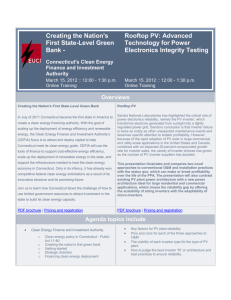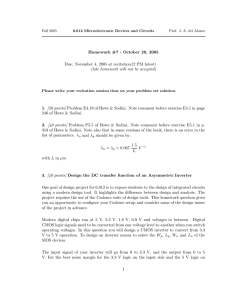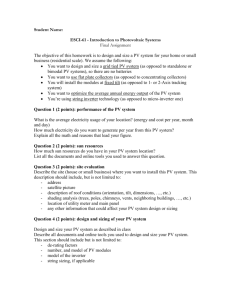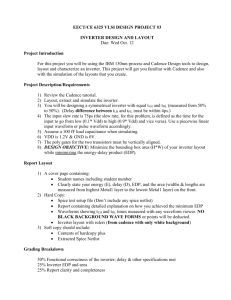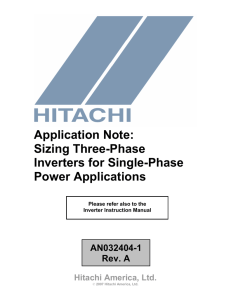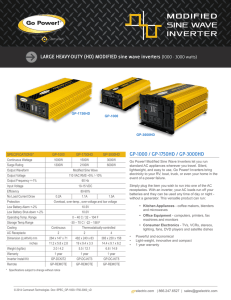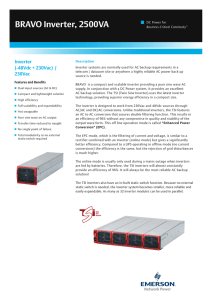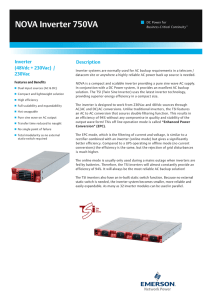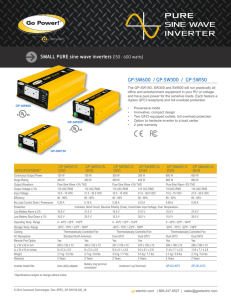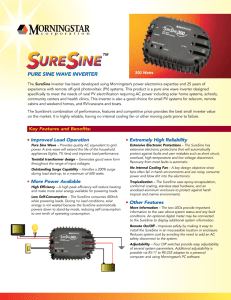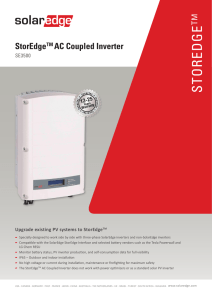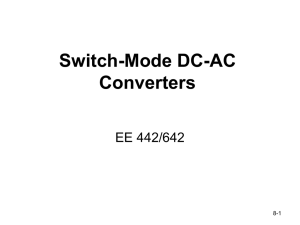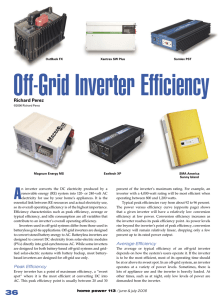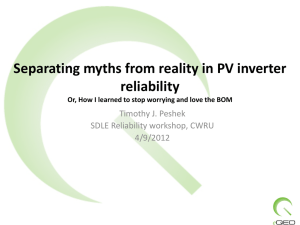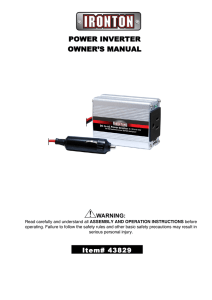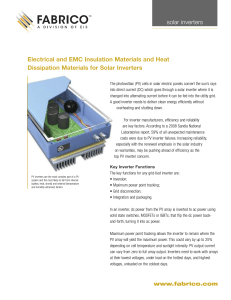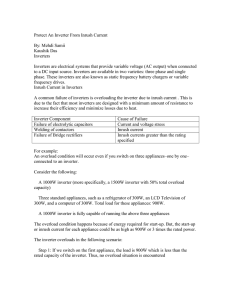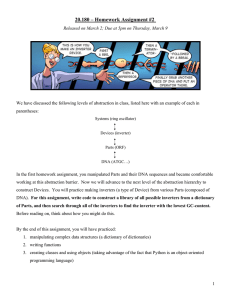docx
advertisement
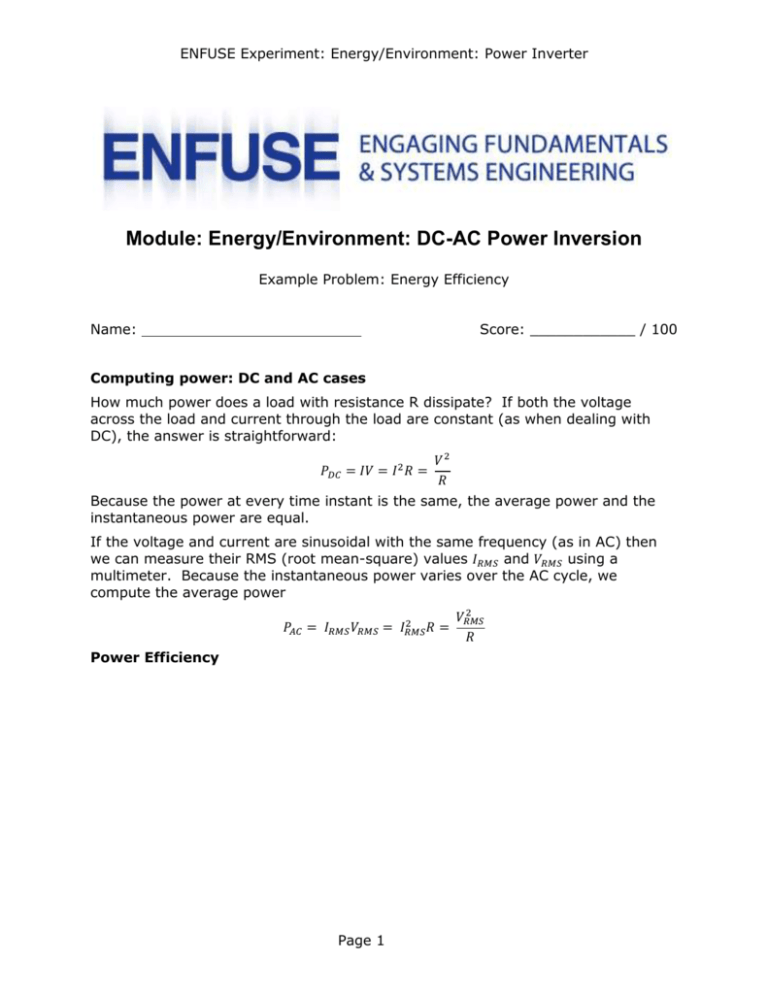
ENFUSE Experiment: Energy/Environment: Power Inverter Module: Energy/Environment: DC-AC Power Inversion Example Problem: Energy Efficiency Name: Score: ____________ / 100 Computing power: DC and AC cases How much power does a load with resistance R dissipate? If both the voltage across the load and current through the load are constant (as when dealing with DC), the answer is straightforward: 𝑃𝐷𝐶 = 𝐼𝑉 = 𝐼 2 𝑅 = 𝑉2 𝑅 Because the power at every time instant is the same, the average power and the instantaneous power are equal. If the voltage and current are sinusoidal with the same frequency (as in AC) then we can measure their RMS (root mean-square) values 𝐼𝑅𝑀𝑆 and 𝑉𝑅𝑀𝑆 using a multimeter. Because the instantaneous power varies over the AC cycle, we compute the average power 2 𝑃𝐴𝐶 = 𝐼𝑅𝑀𝑆 𝑉𝑅𝑀𝑆 = 𝐼𝑅𝑀𝑆 𝑅= Power Efficiency Page 1 2 𝑉𝑅𝑀𝑆 𝑅 ENFUSE Experiment: Energy/Environment: Power Inverter A car’s fuel economy (e.g, in miles/gallon) is one measure of energy efficiency. However, the way to speak of efficiency for inverters is the power efficiency: the ratio of the output power to the input power. The best possible efficiency is one, or 100%. But if the inverter dissipates (or loses) power such that only half is delivered to the load, the efficiency is 0.5 or 50%. To summarize, the power efficiency is 𝜂= 𝑂𝑢𝑡𝑝𝑢𝑡 𝑃𝑜𝑤𝑒𝑟 𝐼𝑛𝑝𝑢𝑡 𝑃𝑜𝑤𝑒𝑟 Energy efficiency and power efficiency Energy is power integrated over time. In units, we have 𝑤𝑎𝑡𝑡𝑠 × 𝑠𝑒𝑐𝑜𝑛𝑑𝑠 = 𝑗𝑜𝑢𝑙𝑒𝑠 This relationship is true if the power is constant over a time interval. Thus for DC, the average power is identical to the instantaneous power. But AC power fluctuates over a cycle. Consider multiple cycles. If the average power over each of those cycles is the same, then the above equation is also true for average AC power. Thus, in both DC and AC cases, the energy is the average power integrated over time. Thus the time can be divided out of both, and so the power efficiency is equal to the energy efficiency. Thus for our DC-AC inverter, the energy efficiency is the ratio of the (AC) output power and the (DC) input power. Problems 1. If a DC power source delivers 1 KW to an inverter, but the inverter delivers 750 W to the load, what is the efficiency of the inverter? 2. A DC-AC inverter takes in 100 W from a solar panel, but dissipates 32 W in heat. The rest of the power is delivered to the load. What is this inverter’s energy efficiency? 3. A poorly-designed DC-AC inverter has an efficiency of 42%. The load requires 100 W of AC power. How much DC power must be delivered by the power source to the inverter? Page 2


